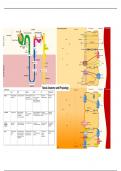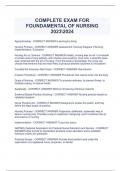Summary
Renal Anatomy and Physiology Summary Notes (with diagrams)
- Course
- Institution
Summary notes made in clerkship in preparation for the LMCC. Simplified renal anatomy and physiology, complete with incredible graphics to walk you through the function of the renal tubules.
[Show more]




